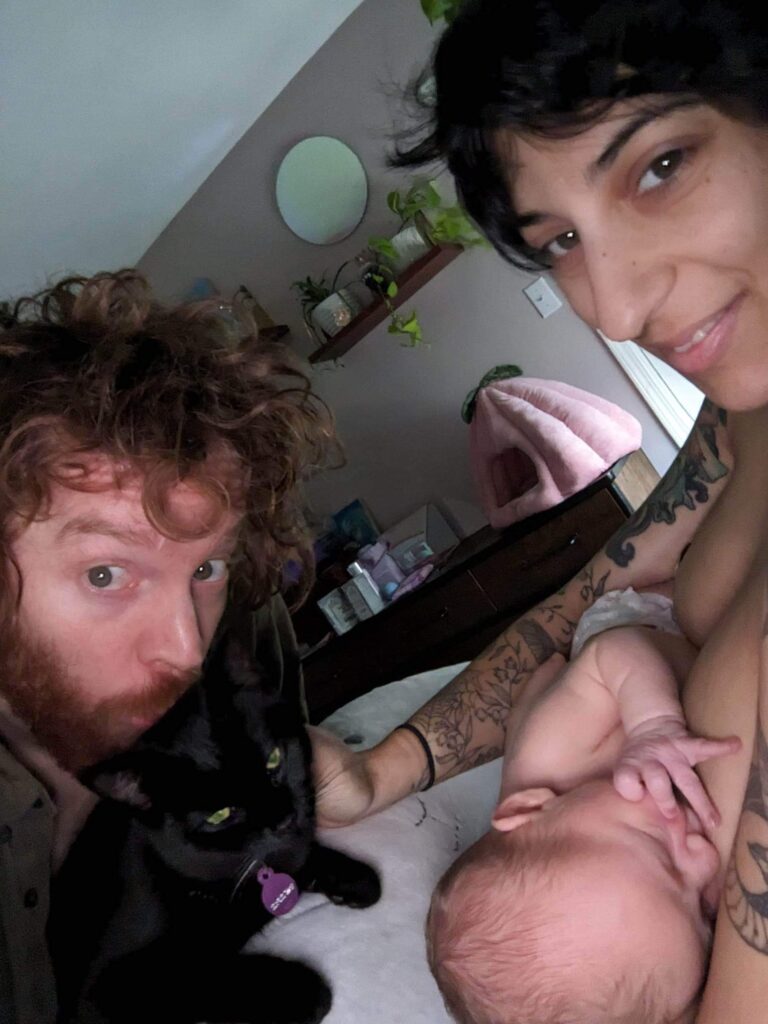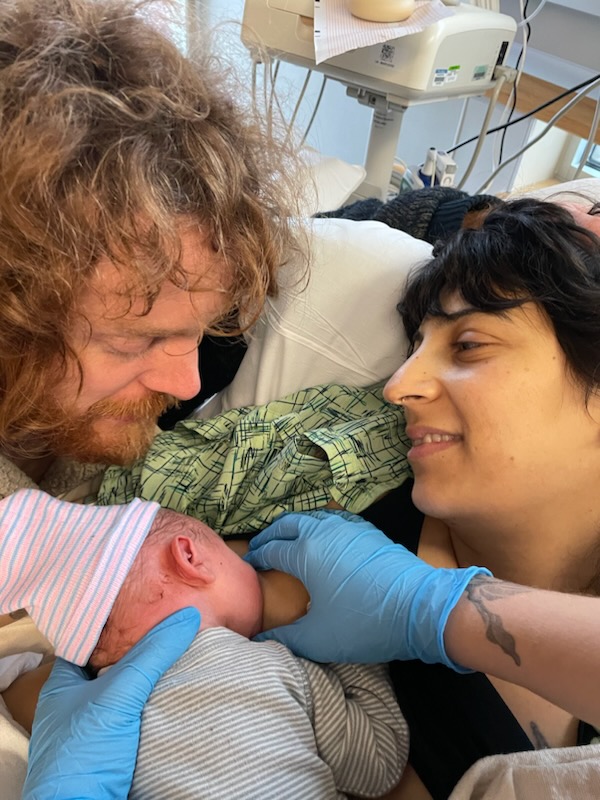
Cerulean’s first bits of milk were latches in the midst of a low-grade emergency as we explored options to ensure their placenta was fully birthed. Ultimately, we went to the hospital and it was the late afternoon of the same day following Cerulean’s 5:01 am birth that we finally arrived home.
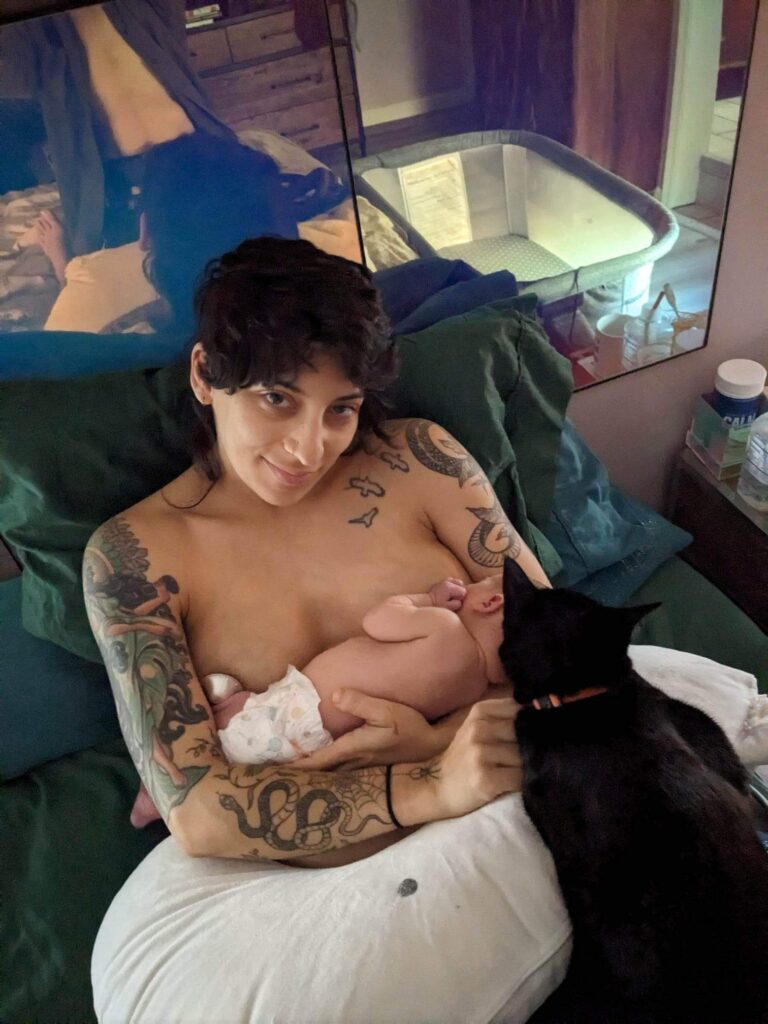
We set ourselves to making sense of Cerulean’s flow of needs, mostly around eating, pooping and sleeping. Taija’s nipples, as those of many a new mother, were sensitive. Our friend April lent her advice and experience, connected us with a remote lactation consultant for some expert advice, and contributed their remedies. Despite regularly checking the latch per some of the nicer breastfeeding videos it was still painful enough to be unsustainable. We are very much interested in breastfeeding, for its various benefits, and would like for it to be a primary feeding method, or at least not be disrupted by alternative methods (like bottle feeding, which we expect CJ will do regularly in the future).
Our midwife and doula shared their tips and insights on their follow-up visits and a lactation consultant’s contact. Our midwife did not identify any visible front tongue tie, but rear tongue ties are much harder to diagnose. Because we were still having trouble getting a good latch and having pain-free breastfeeding, we scheduled an appointment with the lactation consultant.
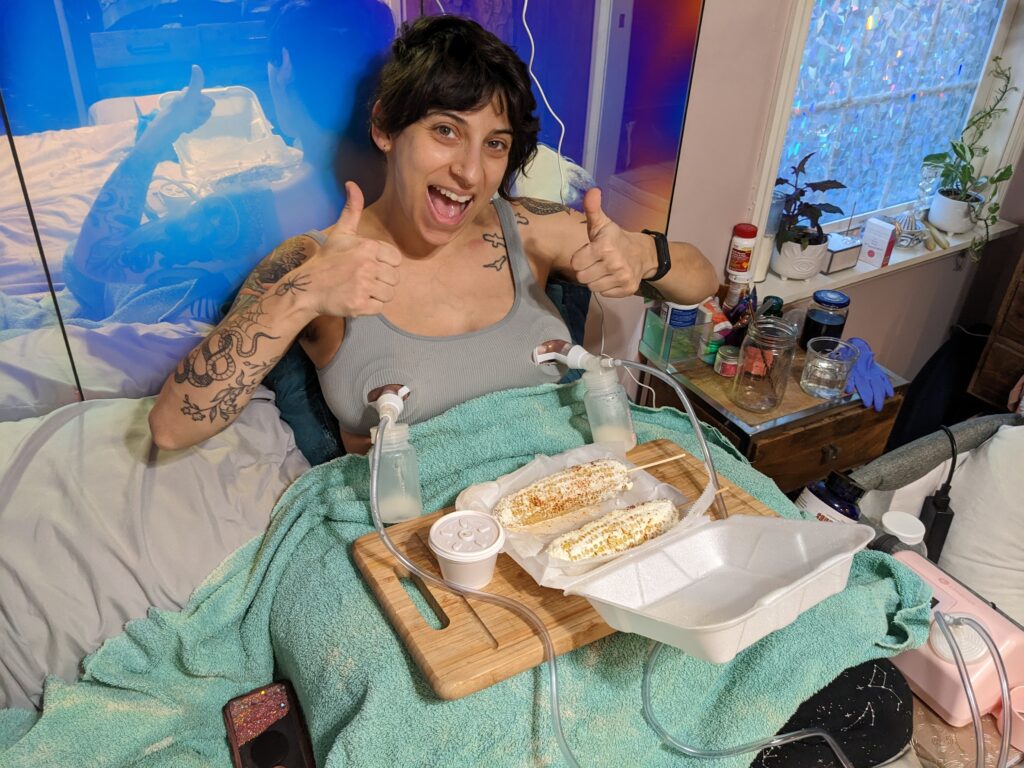
The lactation consultant was able to come when Cerulean was just five days old and her experienced eye saw that Taija’s nipples were scabbing in some places. Also, Cerulean had a chompy vertical bite rather than the forward backward sucking jaw motion that usually indicates a good latch. Considering this, and rather than try to continue latching on raw nipples, she set us up with an intermediary syringe feeding system using a 5ml curved tip syringe, and our trusty hand breastmilk pump alongside a nipple care routine until Taija’s nipples could properly recover. She also passed along some pediatric chiropractor and OT referrals, and the information that pediatric dentists are best visited with a doctor’s referral (especially to be covered by insurance in most cases).
Initially, CJ had been syringe feeding with 1ml syringes from a side-lying position which was quite awkward, but she taught us a method that simulates the deep latch of breastfeeding. You put your pinky in upside down and into the back of the soft palate, to better simulate a natural latch. Still not the most ergonomic, but clearly more comfortable all around and more effective. Still, syringe feeding directly takes a fair bit of attention, as one must match the pressing of the syringe with Cerulean’s sucking motion.
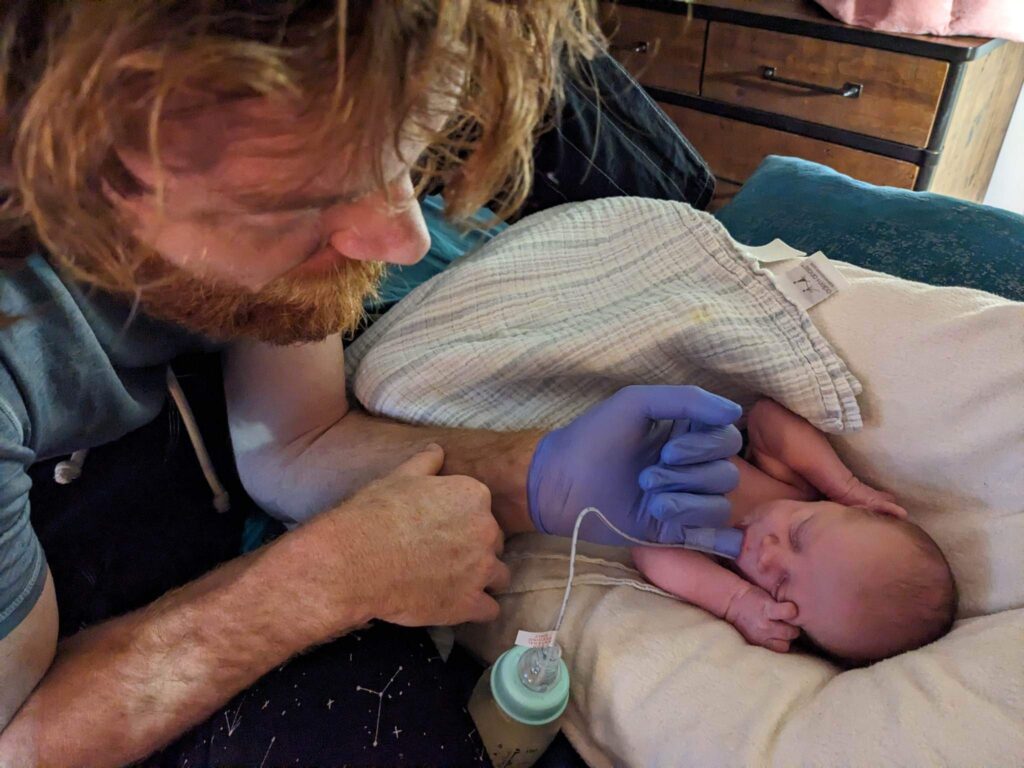
She later helped us set up a tube feeding system from a bottle with a 5ml feeding tube that took much less attention and was more effective. It still takes your finger, as well as requires making sure the tube is properly inserted and is picking up milk from the bottle. You still stimulate the rooting reflex to get a good latch on your finger, simulate ~30 seconds of sucking before the milk ‘lets down’ and then insert the tube, and listen astutely for signs of being done. She also set us up with a more effective electric pump, which greatly eased Taija’s pumping experience as well. By this time Cerulean was already a week old!
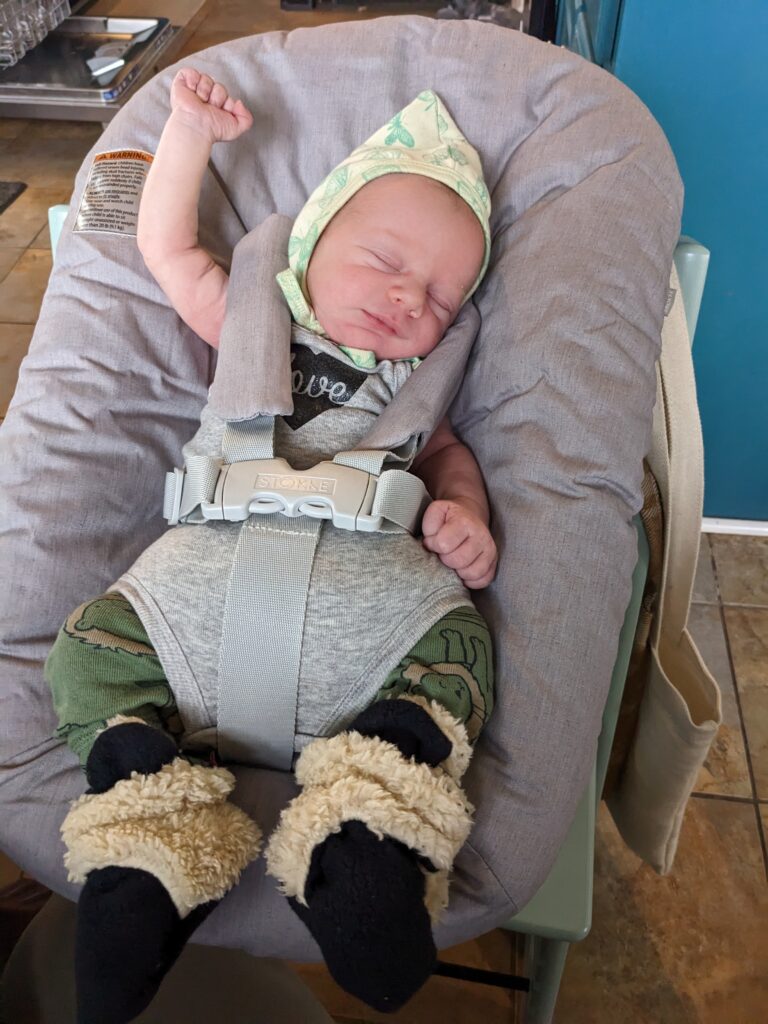
Since then Taija’s been pumping away and Cerulean eating away and digesting! It’s a little unclear all the causes and effects, it could be a bit of overzealous feeding, or the ease of sucking through the tube (of course, the height of the bottle makes a difference), or perhaps Cerulean just takes after CJ and has quite an appetite (!) but Cerulean’s been eating ~800ml a day. While definite numbers on how much babies should be drinking aren’t exactly an exact science (see the difficulties of measuring breastfed milk intake in this study and even high-quality information isn’t often well cited) but it seems pretty clear that an average of 800ml is more than ample, and Cerulean’s first visit to the doctor didn’t pique any concerns.
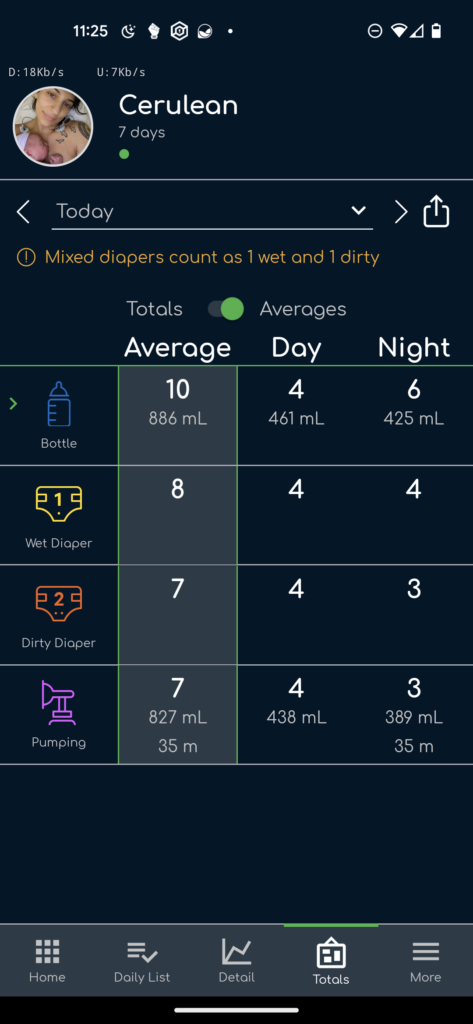

Cerulean was born 7lb 3oz and was down to 7lb on the follow-up visit with the midwife the next day (it’s normal for newborns to lose weight in the first few days as they transition to digesting themselves). By the doctor’s visit on the 25 they were up to 7lb 11oz. (7.7lb). However, given the challenges with early latching, we secured a referral to a pediatric dentist to have Cerulean evaluated for a rear tongue tie.
We had also early on decided to explore the Occupational Therapist (OT) route to look into latch improvements. CJ has long been dipping their toes into the studies of Body Mind Centering (BMC) and earlier in the pregnancy Taija and CJ both joined a wonderful BMC workshop on experiential developmental biology with an Asheville-based friend Janice Geller. BMC was developed by an OT named Bonnie Bainbridge Cohen, so it felt appropriate to go with someone close to that vein. We have our appointment Friday, Jan 27th.
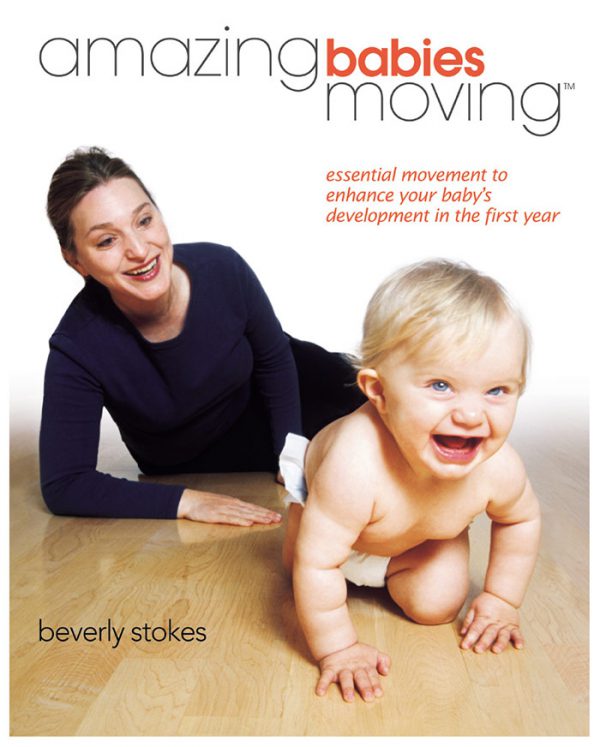
Personally, I’m excited to delve deeper into the explorations of developmental anatomy (stay tuned for our explorations with the Amazing Babies book/program!) and the opportunity to geek out on Cerulean’s development with the OT. I find that my own challenges are often my biggest pathways into deeper personal understanding and growth, so I anticipate not being able to take Cerulean’s latch for granted will also lead us on a rich journey together. – CJ

